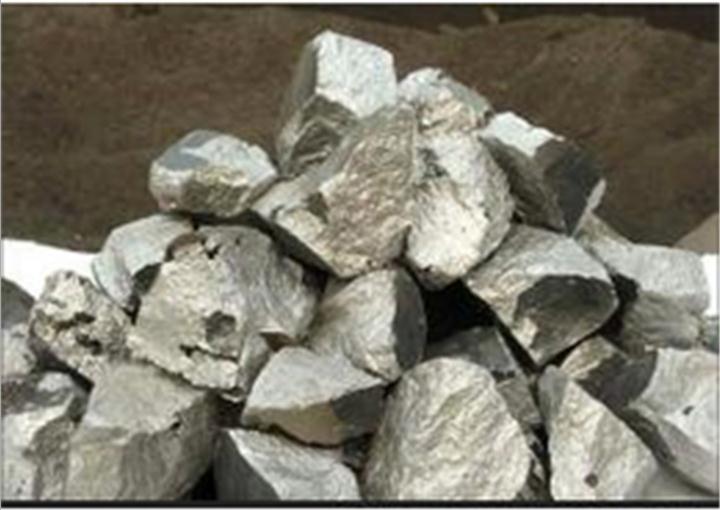Manganese diboride is an additive with anti-oxidation, anti-corrosion, and improving boron-containing thermal strength
Overview of manganese diboride powder
Manganese diboride is stable to non-oxidizing acids, but decomposes in strong oxidants and strong bases. The chemical formula of manganese diboride is MnB2 and the molecular weight is 76.56. Manganese diboride is a gray-black powder with strong magnetism. The relative density of manganese diboride is 6.9, which can be dissolved in acid to generate hydrogen.

Magnesium diboride is an inorganic compound with the molecular formula MgB2. It is a dark gray, water-insoluble solid. This compound has attracted attention because it becomes superconducting at 39 K (-234 °C). In terms of its composition, MgB 2 is significantly different from most low-temperature superconductors, which are mainly characterized by transition metals. The superconducting mechanism is mainly described by the BCS theory.
The superconducting properties of magnesium diboride were discovered in 2001. Its critical temperature (Tc) is 39 K (-234 °C; -389 °F), which is the highest among traditional superconductors. In traditional (phonon-mediated) superconductors, this is unusual. Its electronic structure allows two types of electrons to exist at the Fermi level, and their behavior is very different, one of which (σ bond) has stronger superconductivity than the other (π bond). This is inconsistent with the usual phonon-mediated superconductivity theory, which assumes that all electrons behave in the same way. The theoretical understanding of the characteristics of MgB 2 has been almost realized by modeling two energy gaps. In 2001, it was considered more like a metal than a cuprate superconductor
Using the BCS theory and the known energy gaps of the pi and sigma bands of electrons (2.2 and 7.1 meV, respectively), it has been found that the pi and sigma bands of electrons have two different coherence lengths (51 nm and 13 nm, respectively). Corresponding London penetration depth is 33.6 nm and 47.8 nm. This means that the Ginzburg-Landau parameters are 0.66±0.02 and 3.68, respectively. The first one is smaller than 1/ √ 2 and the second one is larger, so the first one seems to indicate the edge type I superconductor and the second type II superconductor.
It is predicted that when two different electron bands produce two quasiparticles, the coherence length of one of them indicates type I superconductivity, and one of them indicates type II. Then, in some cases, the vortex will attract at a long distance. And repel short distances. In particular, the potential energy between the vortices is minimized at the critical distance. Therefore, there is a speculative new phase called the half Meissner state, in which the vortices are separated by a critical distance. When the applied flux is so small that the entire superconductor cannot be filled with the vortex lattice separated by a critical distance, there will be a large area of Type I superconducting region, the Meissner state, separating these domains.
This conjecture was recently confirmed in the 4.2 Kelvin MgB 2 experiment. The author found that there is indeed a state with a greater density of vortices. Although the typical change in the spacing between Abrikosov vortices in Type II superconductors was on the order of 1%, they found a change on the order of 50%, which is consistent with the idea that vortices aggregate into domains that may be separated by critical distances. The term type 1.5 superconductivity was created for this state.
Application of manganese diboride powder
Manganese diboride is an additive with anti-oxidation, anti-corrosion, and improving boron-containing thermal strength. Manganese diboride is a new type of material in the nuclear industry, military industry and superconducting materials.
Manganese diboride powder price
The price of manganese diboride powder varies randomly with factors such as production costs, transportation costs, international conditions, exchange rates, and market supply and demand for manganese diboride powder. Tanki New Materials Co., Ltd. aims to help various industries and chemical wholesalers find high-quality, low-cost nanomaterials and chemicals by providing a full set of customized services. If you are looking for manganese diboride powder, please feel free to send an inquiry to get the latest price of manganese diboride powder.
Suppliers of Manganese Diboride Powder
As a global supplier of manganese diboride powder, Tanki New Materials Co., Ltd. has extensive experience in the performance, application and cost-effective manufacturing of advanced engineering materials. The company has successfully developed a series of powder materials (titanium diboride, silicon hexaboride, molybdenum boride, iron boride), high-purity targets, functional ceramics and structural devices, and provides OEM services.
| Manganese Diboride Properties | |
| Other Names | Manganese diboride bis(boranylidyne)manganese |
| CAS No. | 12228-50-1 |
| Compound Formula | MnB2 |
| Molecular Weight | 76.56 |
| Appearance | Gray Black Powder |
| Melting Point | N/A |
| Boiling Point | N/A |
| Density | 2.57 g/cm3 |
| Solubility in H2O | N/A |
| Exact Mass | 76.956661 |
| Manganese Diboride Health & Safety Information | |
| Signal Word | N/A |
| Hazard Statements | N/A |
| Hazard Codes | N/A |
| Risk Codes | N/A |
| Safety Statements | N/A |
| Transport Information | N/A |
留言
發佈留言